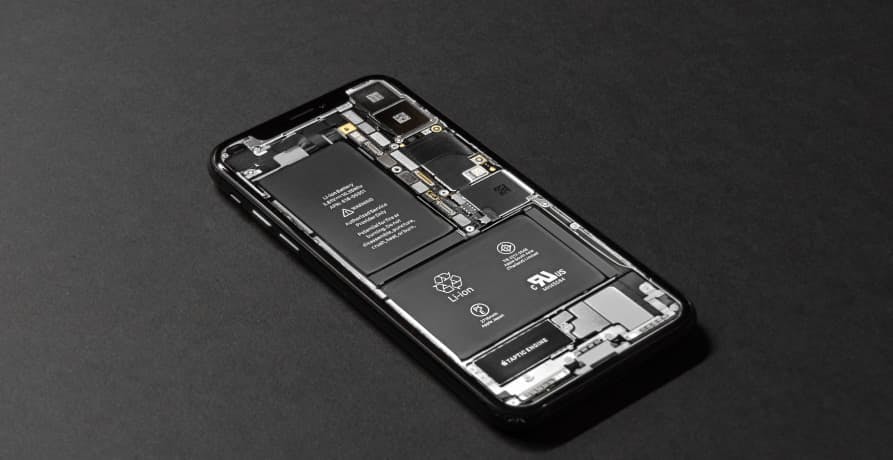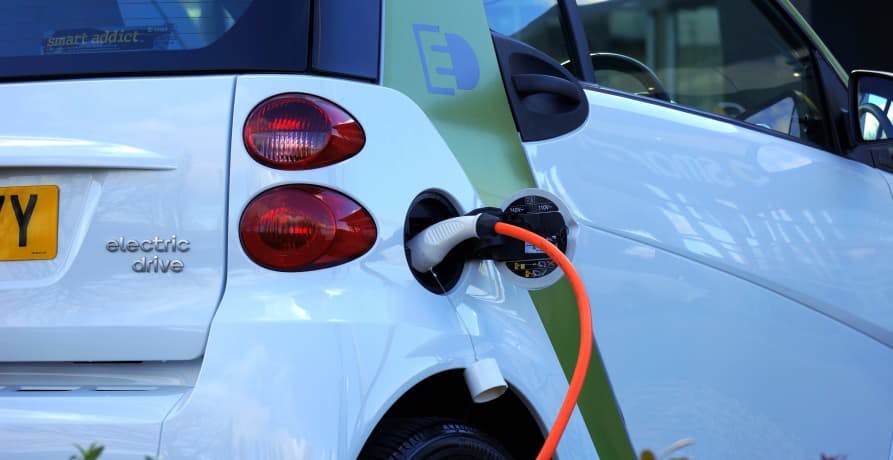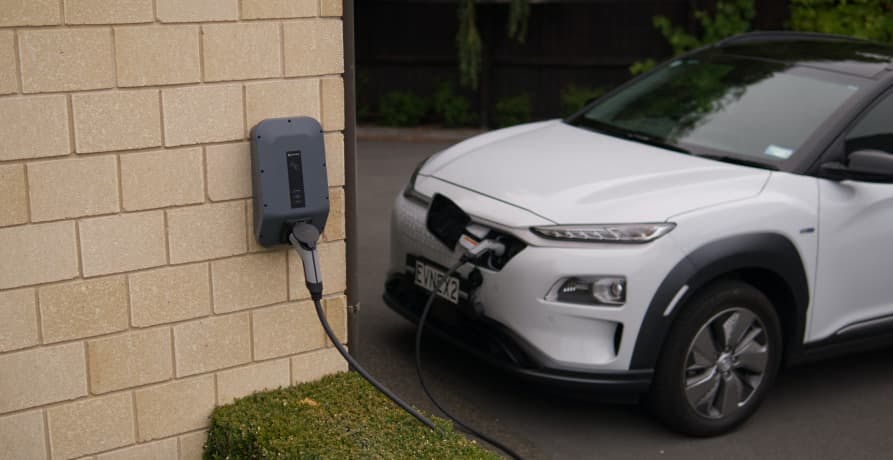ESG / CSR
Industries
Sodium batteries: A better alternative to lithium?



As the world grapples with the environmental and supply challenges posed by lithium-ion batteries, the search is on for more sustainable and accessible alternatives. This is where sodium batteries come in - a potential game-changer in the world of energy storage. With an abundance of sodium resources compared to lithium, these batteries could offer a promising solution to the issues plaguing current battery technology.
👉 In this article, we examine the viability of sodium batteries, weighing their benefits against the challenges they face.
What's the issue with lithium-ion batteries?
Lithium-ion (Li-ion) batteries have become indispensable in our technology-driven world, playing a crucial role in furthering sustainable energy solutions. Their advantages are clear: high energy density, lightweight composition, and rechargeability make them superior in efficiency and longevity compared to many other alternatives. This is why they're so popular in consumer electronics, from mobile phones to laptops, and even in electric vehicles.
Beyond individual devices, lithium-ion batteries are also a crucial component of grid-storage systems, ensuring the consistent flow of electricity from renewable sources such as wind and solar (vital to combating climate change). In fact, the transformative impact of lithium-ion batteries is so significant that it led to a Nobel Prize being awarded to the battery creators in 2019.
However, producing lithium-ion batteries presents substantial challenges. The finite nature of lithium resources raises concerns about sustainable supply as demand escalates.
Furthermore, the extraction of lithium and other rare earth metals like cobalt and nickel, essential for these batteries, involves water-intensive and polluting mining processes that can wreak havoc on local ecosystems. Additionally, communities near mining sites often grapple with water scarcity and health problems stemming from the contamination of their natural resources.
In particular, cobalt mining in the Democratic Republic of Congo made headlines recently for its substandard working conditions, potential human rights abuses, and threat to human health. Mining operations are also increasingly displacing local communities to expand their activities, catering to the escalating worldwide demand for resources. The ethical implications of such mining practices have sparked serious debates about the sustainability of lithium-ion batteries.
In terms of recycling, lithium-ion batteries also pose a complex challenge. The very qualities that make them efficient and lightweight - namely, the mix of rare metals - also make them difficult to recycle. The recycling process is not only technically challenging but also not yet cost-effective compared to the extraction of new materials. As a result, a vast majority of these batteries end up in landfills, leading to hazardous waste concerns. Current global recycling rates for lithium-ion batteries are low, and the push for better recycling technologies is critical as the demand for these batteries continues to soar.
❗️Only 5% of lithium-ion batteries around the world are estimated to be recycled.
Could sodium batteries offer a solution?
In the search for sustainable and ethical energy storage, sodium batteries are emerging as a compelling alternative to conventional lithium-ion batteries. With sodium's easy availability – thanks to its abundance in ocean salt – we're looking at a resource that's much easier to come by than lithium. What's more, is that chemists have managed to create a sodium-based battery that doesn't rely on the use of cobalt or nickel - metals that are not only scarce but also tarnished by ethical mining concerns.
💡 Did you know? Sodium is 1000 times more abundant than lithium!
The concept of sodium-ion (Na-ion) batteries is quickly moving from the laboratory to the real world. Engineers are fine-tuning the designs to optimize performance and safety, while manufacturers, notably in China, are ramping up production. This momentum suggests a shift in the battery industry, with sodium-ion batteries potentially offering a more environmentally friendly alternative to lithium-ion batteries.
How do sodium batteries work?
Sodium batteries operate on the same basic principle as their lithium-ion counterparts, tapping into the reactive nature of alkali metals. Both lithium and sodium reside in the same family on the periodic table, known for their eagerness to react. This is because they have a single electron in their outer shell, which they can easily give up. When these metals react with water, they lose this outer electron, leading to a release of energy - fizzing or even exploding - and forming compounds like lithium hydroxide or sodium chloride (our everyday table salt).
In a battery, when the electron is released from the sodium or lithium atom, it doesn't immediately recombine with another atom. Instead, it travels through a circuit - this flow of electrons is what we experience as electrical current. Meanwhile, the atom it left (now missing its electron and positively charged) takes a different path through a special liquid or gel inside the battery called an electrolyte. This separation of the flow of electrons and ions is essential to how the battery stores and releases energy.
If you reverse the process and apply an external current, you can push the electrons back to their starting point, recharging the battery. This reactivity is what makes both lithium and sodium so useful in batteries.
However, sodium has a catch - sodium ions are bigger, with more protons, neutrons, and an extra electron shell compared to lithium. This means that size for size, sodium batteries are heftier and bulkier than their lithium counterparts for the same amount of energy. That's why, despite sodium's abundance and lower cost, lithium initially took the lead in battery tech. But with advancements in design and materials, sodium batteries are starting to show that they might just have what it takes to compete, especially in applications where the battery's weight and size are less critical.
Sodium batteries operate on the same basic principle as their lithium-ion counterparts, tapping into the reactive nature of alkali metals. Both lithium and sodium reside in the same family on the periodic table, known for their eagerness to react. This is because they have a single electron in their outer shell, which they can easily give up. When these metals react with water, they lose this outer electron, leading to a release of energy - fizzing or even exploding - and forming compounds like lithium hydroxide or sodium chloride (our everyday table salt).
In a battery, when the electron is released from the sodium or lithium atom, it doesn't immediately recombine with another atom. Instead, it travels through a circuit - this flow of electrons is what we experience as electrical current. Meanwhile, the atom it left (now missing its electron and positively charged) takes a different path through a special liquid or gel inside the battery called an electrolyte. This separation of the flow of electrons and ions is essential to how the battery stores and releases energy.
If you reverse the process and apply an external current, you can push the electrons back to their starting point, recharging the battery. This reactivity is what makes both lithium and sodium so useful in batteries.
However, sodium has a catch - its atoms are bigger, with more protons, neutrons, and an extra electron shell compared to lithium. This means that size for size, sodium batteries are heftier and bulkier than their lithium counterparts for the same amount of energy. That's why, despite sodium's abundance and lower cost, lithium initially took the lead in battery tech. But with advancements in design and materials, sodium batteries are starting to show that they might just have what it takes to compete, especially in applications where the battery's weight and size are less critical.
Sodium batteries vs lithium batteries
How do sodium batteries stack up against traditional lithium-ion batteries? We've outlined the main differences in the table below:
| Parameter | Sodium-Ion Batteries | Lithium-Ion Batteries | Winner |
|---|---|---|---|
| Energy Density | 150-160 Wh/kg | 250-260 Wh/kg | Lithium-Ion |
| Cycle Life | Shorter cycle life | Longer cycle life | Lithium-Ion |
| Cost | Lower due to abundant sodium and simpler extraction processes | Higher due to scarcity and complex extraction of lithium | Sodium-Ion |
| Environmental Impact | Higher greenhouse gas emissions per unit energy currently | Lower greenhouse gas emissions per unit energy currently | Lithium-Ion (currently) |
| Resource Availability | High, sodium is abundant and widely distributed | Limited, lithium is scarce and geographically concentrated | Sodium-Ion |
| Safety | Lower risk of thermal runaway and non-flammable | Medium risk of thermal runaway and flammable | Sodium-Ion |
| Recyclability | Higher potential for non-toxic recycling | Lower, complex and energy-intensive recycling processes | Sodium-Ion |
| Optimal Temperature Range | Better performance in extreme temperatures | Optimal performance between 15-35°C, limited at extremes | Sodium-Ion |
| Charging Speed | Slower due to lower diffusion coefficient of sodium ions | Faster due to higher diffusion coefficient of lithium ions | Lithium-Ion |
Key findings:
- Energy density: Sodium-ion batteries have a lower energy density (150-160 Wh/kg) compared to lithium-ion batteries (200-300 Wh/kg), making lithium-ion more suitable for high-energy applications.
- Cycle life: Lithium-ion batteries tend to offer a longer cycle life versus sodium-ion batteries, indicating better durability for lithium-ion. However, this could potentially change in the future as sodium-ion batteries continue to develop.
- Cost and resource availability: Sodium-ion cells are more cost-effective than lithium-ion cells due to the abundance of sodium and simpler extraction processes, unlike lithium which is scarce and expensive.
- Environmental impact: Sodium-ion batteries currently have higher greenhouse gas emissions during production, but this could improve with advancements in technology. Lithium-ion batteries have lower emissions per unit of energy produced.
- Safety: Sodium-ion batteries are safer with a lower risk of thermal runaway and are non-flammable, whereas lithium-ion batteries carry a medium risk and are flammable.
- Recyclability: Sodium-ion batteries are easier and less toxic to recycle compared to the complex and energy-intensive recycling processes for lithium-ion batteries.
- Temperature performance: Sodium-ion batteries perform better in extreme temperatures, while lithium-ion batteries have optimal performance between 15-35°C but are limited at temperature extremes.
- Charging time: Sodium-ion batteries generally offer faster charging and can allow 100% discharge, whereas lithium-ion batteries have slower charging times.
Why does size matter?
When it comes to batteries, size and weight are often as important as how much power they pack. Lithium, being the third-lightest element, has been the go-to for creating compact, energy-dense batteries that are ideal for smartphones and electric vehicles (EVs). The lightweight nature of lithium-ion batteries has been a driving force behind their widespread adoption since they allow phones to be sleeker and EVs to travel further on a single charge.
But not every situation demands the smallest and lightest battery possible. For example, in grid-scale energy storage systems that capture and store power from renewable sources, or in heavy transportation like trucks and ships, the battery's size isn't as critical. This is where sodium batteries come into play. Sodium sits just below lithium on the periodic table and shares some characteristics, but it's heavier and larger. This means sodium batteries tend to be bigger and heavier for the same energy capacity.
However, the size might not be a dealbreaker for certain applications. What's more is that sodium batteries are starting to catch up in terms of energy density, reaching levels that some of the early lithium-ion batteries had a decade ago. And while they may not yet be suitable for powering a cross-country EV road trip, they could be sufficient for daily commutes or city driving.
Perhaps most appealing to developers is the cost advantage of sodium. Recent advancements mean that sodium batteries are beginning to rival certain lithium-ion batteries, especially those using lithium iron phosphate (LFP) cathodes. LFP batteries are cheaper but less energy-dense than other lithium-ion technologies. Sodium-ion batteries are showing promise for delivering an even more cost-effective option, potentially offering cheaper EVs with a decent range.

Application of lithium-ion batteries and sodium-ion batteries
Lithium-ion batteries are currently the best option for
Portable electronics:
- Examples: Mobile phones, laptops, tablets, and wearable devices.
- Reason: Lithium-ion batteries offer high energy density, which means they can store a large amount of energy in a compact size. This makes them ideal for devices that need to be lightweight and portable while providing long usage times. The high cycle life also ensures durability and longevity for frequent charging and discharging.
Electric vehicles (EVs):
- Examples: Electric cars, bikes, and scooters.
- Reason: The high energy density of lithium-ion batteries allows EVs to achieve longer driving ranges on a single charge. Additionally, their relatively fast charging times and established infrastructure for production and recycling make them the preferred choice for the automotive industry.
Consumer electronics:
- Examples: Cameras, power tools, and portable gaming devices.
- Reason: The ability to deliver high power output and quick recharge capabilities makes lithium-ion batteries suitable for devices that require bursts of power and quick turnaround times between uses.

Sodium-ion batteries are currently the best option for
Grid storage:
- Examples: Renewable energy storage systems, and backup power supplies.
- Reason: Sodium-ion batteries are more cost-effective due to the abundance of sodium, making them ideal for large-scale energy storage solutions where cost is a significant factor. They also have a lower risk of thermal runaway, enhancing safety in stationary applications.
Industrial applications:
- Examples: Energy storage for industrial equipment and machinery.
- Reason: Sodium-ion batteries' ability to perform well in extreme temperatures and their safety advantages make them suitable for industrial environments where reliability and safety are critical.
Backup power systems:
- Examples: Uninterruptible power supplies (UPS) and emergency power systems.
- Reason: With their non-flammable nature and lower risk of thermal runaway, sodium-ion batteries provide a safer alternative for backup power systems, ensuring reliable power in critical situations.

Application round up
- Lithium-Ion Batteries: Best suited for portable electronics, electric vehicles, and consumer electronics due to their high energy density, long cycle life, and established recycling infrastructure.
- Sodium-Ion Batteries: More suitable for grid storage, industrial applications, and backup power systems where cost, safety, and performance in extreme conditions are more important than compact size and high energy density.
By leveraging the strengths of each battery type in their respective ideal applications, both technologies can complement each other in advancing various aspects of energy storage and usage.
Where are sodium batteries being developed?
China is leading the charge in the development of sodium batteries, recognizing their potential as a key player in the future of electric vehicles (EVs). CATL, a Chinese battery manufacturer, has already announced the first sodium-ion battery for electric vehicles, and carmaker Chery will be among the first to mass use these in its new iCar brand. Other Chinese manufacturers, HiNa and JAC group, are following suit in the mass production of their own sodium-powered EVs, aiming for affordability and practicality with a 155-mile range model that's priced at around $10,000.
The country's commitment to this technology is part of its broader economic strategy, with over 36 Chinese companies actively exploring or producing sodium batteries. The industry's rapid expansion is evident, with dozens of sodium-ion battery factories in China and plans for more, including an international plant in Malaysia. This push reflects a significant shift towards diversifying energy sources and advancing EV technology.

The future of sodium-ion battery technology
The future of sodium-based batteries is bright but it's not without its uncertainties. As with any emerging technology, a note of caution is warranted; after all, battery innovations don't happen overnight. It took decades for lithium batteries to evolve from initial research to the technology they are today.
By 2030, it's estimated that sodium battery facilities could have a significant manufacturing capacity, but it's projected that only a little over half of this capacity will be utilized for cell production, representing a mere 2% of the forecasted lithium-cell production for the same year.
Despite the cautious pace, the prospects for sodium batteries are appealing, particularly for grid storage, where they could hold their own against lithium iron phosphate batteries and other emerging technologies. In heavy transport, sodium batteries are an alternative to hydrogen fuel cells, which, while promising, depends on infrastructure that's still in development.
The success of sodium batteries, especially in weight-sensitive applications like electric vehicles, hinges on material costs and scientific advancements. If the prices of rare earth metals such as lithium, cobalt, and nickel remain high, it could incentivize efforts to enhance sodium battery technology, potentially improving their energy density and overall performance.
Research is already underway to develop new cathode materials for sodium batteries, aiming to increase energy storage and extend the driving ranges of EVs. As these batteries start entering the market, their evolution and competitiveness against established lithium batteries will be shaped by both economic trends and breakthroughs in materials science.
What about Greenly?
How Greenly can support your business in reducing emissions
Greenly provides innovative solutions to help your business enhance its environmental sustainability by lowering carbon emissions and embracing greener practices. Here’s how we can help you on your sustainability journey:
Measuring Greenhouse Gas Emissions
- Emissions tracking: Assess Scope 1, 2, and 3 emissions to gain a complete picture of your greenhouse gas emissions.
- Cutting-edge technology: Utilise the latest tools to accurately measure your carbon footprint, analyze emissions, and set realistic reduction targets.
Custom Action Plans
- Expert collaboration: Partner with Greenly’s climate specialists to create customized action plans tailored to your business needs.
- Thorough assessment: Pinpoint key areas for improvement and implement effective sustainability strategies.
Decarbonizing Your Supply Chain
- Supplier engagement: Collaborate with suppliers to minimize carbon emissions throughout your supply chain.
- Sustainable sourcing: Transition to low-carbon suppliers and establish greener partnerships.
- Effective Scope 3 management: Increase transparency and efficiently manage Scope 3 emissions.
Intuitive Platform
- User-friendly interface: Leverage Greenly’s intuitive platform to calculate and monitor your business’s carbon footprint, ensuring a smooth and efficient carbon assessment process.
With Greenly’s expertise, your business can significantly reduce its environmental impact, achieve ESG goals, and improve sustainability while making informed business decisions. Contact us today to begin your journey towards a more sustainable future.





